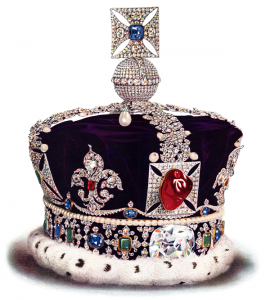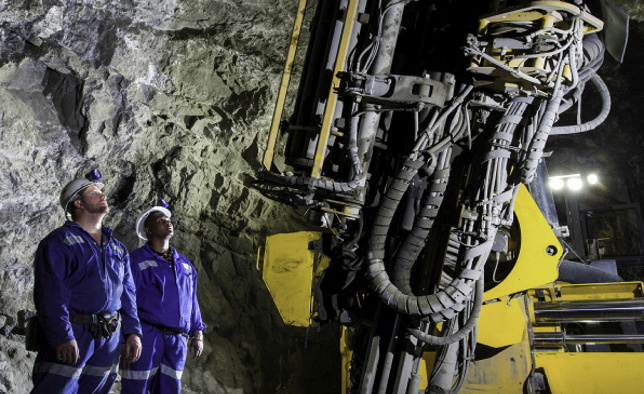
De Beers and Alrosa continued to see rock-bottom sales in June as buyers rejected the miners’ high rough prices in favor of cheaper goods from smaller suppliers.
“[The major miners] want to hold on to prices, so people don’t see any [incentive] to buy because it’s difficult to sell and make money,” a sightholder told Rapaport News. “[Manufacturers and dealers] are already sitting on large inventories of polished and rough.”
The two largest producers have maintained their prices at pre-coronavirus levels, while other miners holding tenders in Antwerp have sold at prices 15% to 25% lower than in February, an Alrosa client observed. Even the smaller producers’ prices were inflated, he explained, as they were serving customers seeking specific items in small quantities.
If De Beers or Alrosa were to put their monthly allocations on the open market, they would fetch prices up to 30% below their current levels, the dealer estimated. “There is no appetite for rough, as factories [in India] have been operating on a very, very small capacity for a month,” he stressed.
“Sales of polished have not improved dramatically, and stocks are still there,” a sightholder added. “Factories have no reason to open, so why would we buy rough?”
De Beers held its June sight last week, with limited viewings in Antwerp instead of at the usual location in Gaborone, Botswana, due to Covid-19 travel restrictions. The sight had an estimated value of around $40 million, according to a source with knowledge of the sale. De Beers hasn’t released sales data since its February sight, and is scheduled to publish its earnings for the first half of the year on July 30.
Alrosa also struggled to attract buyers to its latest trading session, which ended June 15, after reporting record low revenues in April and May. The Russian miner is due to publish its June data on July 10.
Kick-starting sales
Rough buyers have sensed an increased urgency for both De Beers and Alrosa to increase revenue, after the miners allowed 100% deferrals of purchase allocations during the coronavirus crisis. They introduced that flexibility to protect prices and avoid flooding the market with goods, but now customers are unwilling to resume buying unless value improves. Five Alrosa clients have already given up their statuses as Alrosa contract customers since March, perceiving pressure to make purchases.
Rough buyers have sensed an increased urgency for both De Beers and Alrosa to increase revenue, after the miners allowed 100% deferrals of purchase allocations during the coronavirus crisis. They introduced that flexibility to protect prices and avoid flooding the market with goods, but now customers are unwilling to resume buying unless value improves. Five Alrosa clients have already given up their statuses as Alrosa contract customers since March, perceiving pressure to make purchases.
To drum up interest, Alrosa is considering holding contract sales outside Moscow for its July session, with Antwerp the likely venue, and is weighing up whether to continue its deferrals policy.
“Being committed to the prudent sales policy, in subsequent trading sessions of the year we will use all available instruments to maintain supply-and-demand balance and help to normalize cutters’ level of inventories,” an Alrosa spokesperson said. De Beers declined to comment.
Most manufacturers in India have enough rough to keep their factories going until August, and are only buying if they have specific shortages, dealers explained. That has boosted sales at smaller miners that are in need of liquidity and have sold low volumes at reduced prices to cutters looking to fill limited inventory gaps.
The recent increase in Covid-19 cases in Surat has added to the predicament, dealers asserted. The Indian polishing industry hasn’t returned to consistent operations since the government allowed it to reopen last month, with several companies forced into temporary shutdowns following virus outbreaks.
“Most [Alrosa] clients have the same attitude as me — they don’t need the goods, and they’re not ready even to look at the goods at this price,” a dealer said.
Gradual release
However, deep and sudden discounts on rough could damage the entire market, sightholders acknowledged. As such, they only foresee De Beers and Alrosa reducing prices when the market recovers, which the buyers expect to happen in the fall, assuming retail stores and trading centers continue to reopen. Only then will the largest miners gradually release their stockpiles, dealers predicted.
However, deep and sudden discounts on rough could damage the entire market, sightholders acknowledged. As such, they only foresee De Beers and Alrosa reducing prices when the market recovers, which the buyers expect to happen in the fall, assuming retail stores and trading centers continue to reopen. Only then will the largest miners gradually release their stockpiles, dealers predicted.
“Let [the goods] come in very small quantities, so in the meantime overall inventory will slowly decline, the industry will generate money, and banks will feel comfortable,” a dealer argued. “We will start our business from September onward, when the Christmas season begins.”
Indeed, buyers will have to return to De Beers and Alrosa if they need more significant volumes when the market improves.
“Maybe by then we will have more of a balance of supply and demand, and maybe we’ll have more confidence to buy at certain prices that we don’t have now,” a sightholder said.
Source: DCLA






